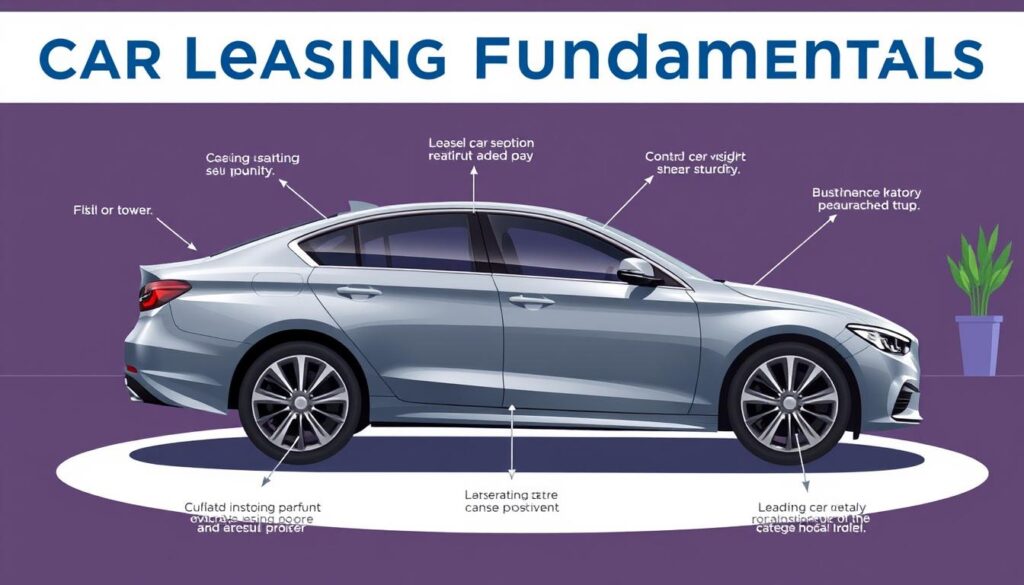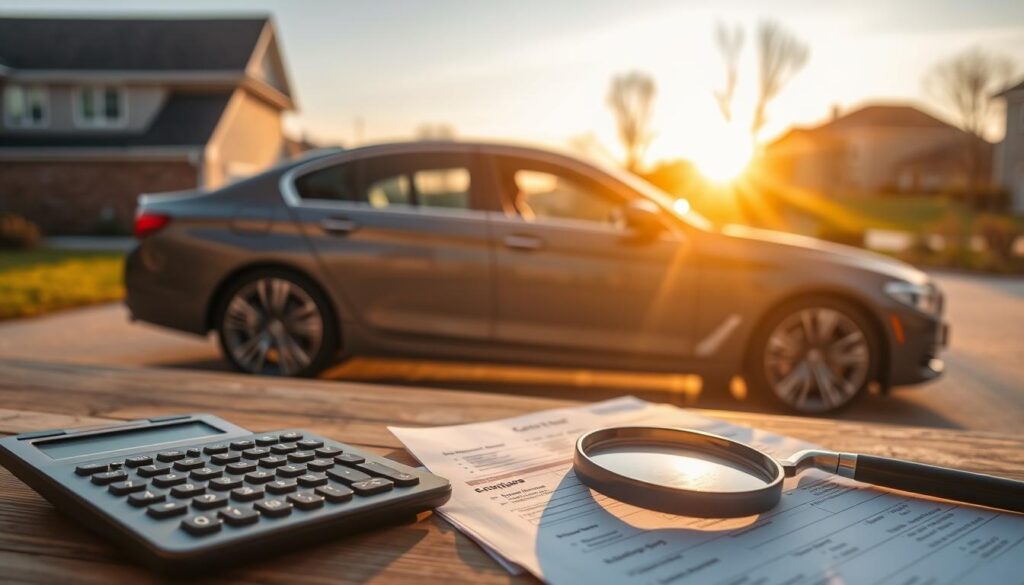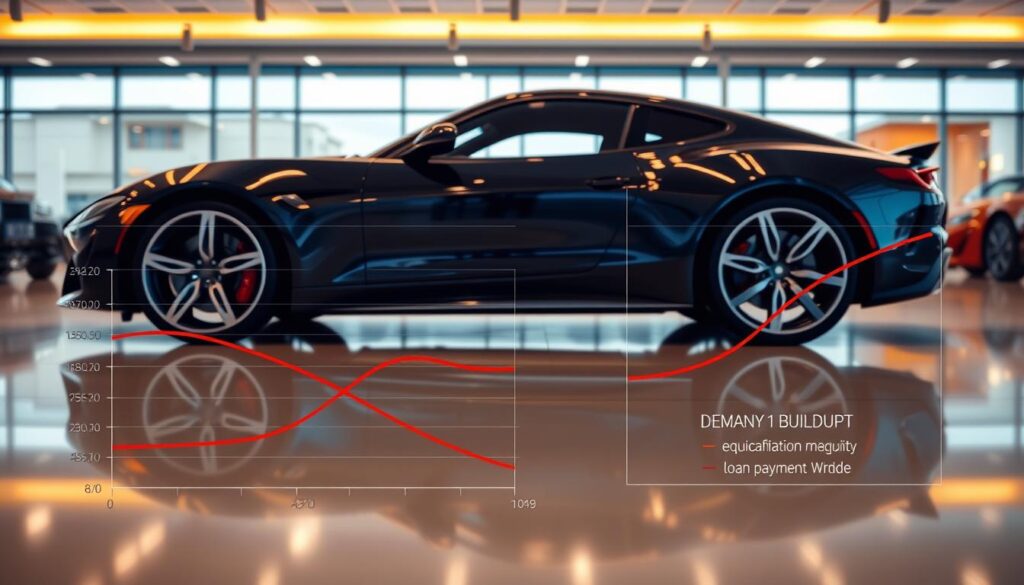Lease vs. Buy: Which is Better?
Did you know the average monthly payment for a new car has soared past $700? This startling figure makes the choice of how to get a vehicle more critical than ever.
This isn’t just about picking a color or model. It’s a major financial decision that shapes your monthly budget and long-term wealth. Your option can either lock you into years of payments or provide the freedom to upgrade frequently.
Understanding the core differences between leasing and buying is the first step. Each path offers unique benefits and trade-offs related to ownership, cost, and flexibility.
We’re here to guide you through this complex choice. Our friendly breakdown will give you the confidence to select the best vehicle acquisition strategy for your life.
Key Takeaways
- The decision between leasing and buying a car is a significant financial commitment with long-term implications.
- Your choice directly impacts your monthly cash flow and overall financial health.
- Modern factors like lifestyle needs and ownership goals add complexity to the decision.
- Leasing and buying have fundamental differences in payment structure and ownership rights.
- Thoroughly understanding both options is essential before making a commitment.
- This article will provide detailed comparisons and practical guidance for an informed choice.
Understanding the Basics of Leasing and Buying

Modern car acquisition boils down to two fundamental approaches with distinct mechanics. Understanding these core concepts helps you make an informed choice that fits your lifestyle and budget.
Definition and Overview of Leasing
Think of leasing as a long-term rental agreement for your vehicle. You make monthly payments to drive the car for a set period, usually 2-3 years, with a specific mileage limit.
Your payment primarily covers the vehicle’s depreciation during your lease term, plus fees and interest. When the contract ends, you typically return the automobile to the leasing company.
What It Means to Buy a Car
Purchasing a vehicle with an auto loan means you’re working toward full ownership. You borrow money from a lender and make regular payments that include both principal and interest.
Each payment builds your equity in the car. Once the loan is complete, you own the asset outright with no further obligations.
The essential difference lies in temporary usage versus permanent ownership.
This fundamental distinction shapes everything from monthly costs to long-term financial outcomes.
Key Differences in Ownership and Payment Structures
Your approach to getting a car fundamentally shapes your relationship with the asset over time. The financial implications extend far beyond monthly payments into long-term wealth building.
Ownership Versus Usage Rights
When you purchase a vehicle through financing, you’re building something valuable with each payment. This process creates equity that becomes yours at the loan’s conclusion.
The automobile’s remaining value belongs entirely to you. This asset can help fund your next vehicle purchase when you’re ready to upgrade.
Leasing operates on a completely different principle. You pay for temporary usage rights without accumulating ownership stake.
Your monthly costs cover the vehicle’s depreciation during the contract period. When the agreement ends, you simply return the car or start a new arrangement.
| Aspect | Ownership (Buying) | Usage (Leasing) |
|---|---|---|
| Long-term Outcome | Full asset ownership | No equity accumulation |
| End-of-Term Options | Keep, sell, or trade vehicle | Return or start new lease |
| Financial Benefit | Builds equity over time | Lower monthly payments |
| Asset Control | Complete flexibility | Usage restrictions apply |
This fundamental distinction affects your financial flexibility for years. Choose the path that aligns with your personal goals and budget priorities.
Comprehensive Analysis: Lease vs. Buy
Budget-conscious drivers often focus first on the immediate financial impact of their vehicle choice. The numbers tell a compelling story about which path might work for your wallet.
Evaluating Monthly Payments and Upfront Costs
Recent data shows a clear pattern in monthly payments. The average lease arrangement costs about $612 per month. A traditional auto loan averages $749.
This $137 difference makes leasing attractive for many drivers. But the initial costs tell another part of the story.
| Expense Type | Leasing Approach | Ownership Path |
|---|---|---|
| First Month | Payment due at signing | Down payment required |
| Additional Fees | Security deposit, acquisition fee | Taxes on full purchase price |
| Long-term Value | No equity accumulation | Building ownership stake |
“Lower monthly obligations come with the trade-off of never owning the asset outright.”
Lease payments cover only the vehicle’s depreciation during your contract. Loan payments finance the entire car price.
Your decision hinges on prioritizing short-term affordability or long-term investment. Consider your cash flow and financial goals carefully.
Pros and Cons of Leasing vs. Buying New Cars
Every driver faces the rewarding decision between temporary vehicle access and permanent ownership. Both paths offer compelling benefits that suit different lifestyles and financial goals.
Advantages of Leasing a New Car
Leasing lets you enjoy a brand-new automobile every few years. You always drive the latest models with cutting-edge safety and technology features.
Monthly payments are typically lower than financing a purchase. You also avoid surprise repair costs since the vehicle stays under factory warranty.
This approach makes premium brands more accessible. You can experience luxury features that might otherwise stretch your budget.
Benefits of Purchasing and Building Equity
When you buy a car, you’re investing in long-term value. Each payment builds equity that becomes yours after the loan term.
Ownership means no mileage limits or wear-and-tear worries. You can customize your vehicle and drive it for many payment-free years.
This path creates financial flexibility down the road. Your fully-owned automobile can help fund your next purchase when you’re ready to upgrade.
Both options have legitimate advantages depending on your priorities. Consider what matters most for your driving experience and financial future.
Financial Implications and Payment Breakdown

Breaking down the components of your car payment helps clarify which financing path makes financial sense. Understanding the math behind each option reveals important cost differences.
Calculating Lease Payments and Sales Taxes
A lease payment has three main parts: depreciation, interest, and sales tax. For a $45,000 vehicle with 79% residual value, the depreciation cost is $6,450 over 39 months.
This equals about $165 per month. The interest portion uses a money factor instead of an APR rate. A 0.00291 money factor equals 6.98% interest.
With leasing, you only pay sales tax on your monthly payments. This can save significant money compared to buying.
Comparing Loan Payments and Long-Term Costs
When you finance a purchase, your payment covers the full vehicle price plus taxes. For a $42,000 car with 8.99% tax, the total financed amount is $45,775.
At 6.98% interest over 72 months, the monthly payment would be $780. While higher than lease payments, each payment builds equity toward full ownership.
The long-term financial impact differs significantly between these approaches. Consider both immediate costs and future value when deciding.
Evaluating Vehicle Depreciation and Equity Buildup

Understanding how cars lose value over time reveals a crucial financial difference between your options. This depreciation affects everyone differently based on their acquisition method.
Depreciation Considerations and Residual Value
All automobiles begin losing value immediately. When you choose a lease, the company estimates this depreciation through residual value.
This predicted worth at your lease term conclusion determines your payments. Smart negotiation can significantly reduce costs.
Every $1,000 reduction in price typically lowers monthly payments by about $30. You’re protected from market fluctuations since you simply return the vehicle at the end lease.
Impact on Future Trade-In and Resale Value
Choosing to purchase creates a different financial story. You build equity as you pay down the loan faster than the car depreciates.
After 39 months of payments totaling $30,422, selling the vehicle for its residual value of $35,550 could yield $11,512 in equity. This money becomes yours to use for your next automobile.
Recent price increases make this equity buildup even more valuable. Kelley Blue Book reports new car prices jumped 29% from 2018 to 2023.
Your choice determines whether depreciation becomes your expense or your opportunity for financial growth over the years.
Conclusion
Ultimately, your vehicle financing decision should align with both your current budget and long-term financial goals. With nearly 24% of new cars now being leased, this option offers appealing lower monthly payments and access to the latest models.
However, if you drive many miles beyond typical 10,000-12,000 annual limits, purchasing becomes more practical. You’ll avoid excess mileage fees that can cost 12-30 cents per extra mile.
Consider whether you prefer building equity over time or having predictable costs during your lease term. Ownership means no wear-and-tear fees at the end, while leasing provides maintenance coverage.
For electric vehicles, leasing can offer special advantages like accessing the federal tax credit of up to $7,500. This makes trying new technology more affordable.
Your perfect choice depends on your driving needs, financial situation, and personal preferences. Armed with this knowledge, you’re ready to make a confident decision that serves you well for years to come.
FAQ
What is the main difference between leasing and buying a new car?
Are monthly payments usually lower when you lease?
How does mileage work with a leasing company?
What happens at the end of a lease term?
Is it better to lease or buy if I want to build equity?
Who is responsible for repairs and maintenance?
Can I customize a car I’m leasing?

Sharon Molly is a content creator in lifestyle, fashion, and travel, delivering style-savvy advice and destination insights to inspire confident living. With a background in digital media, she combines aesthetics with practical guidance for modern women on the go.




